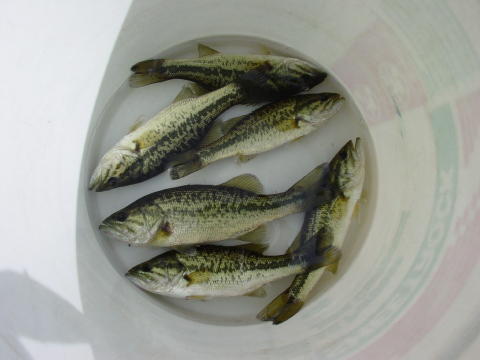Before a pond is stocked, deciding which fish species you would like to raise and which would do best in your pond is important. After all, how can you become involved in a pond management operation if you don’t know what you are trying to do? On this site, I only recommend fish species combinations that have proven to provide excellent fishing opportunities in farm ponds. Management practices to maintain good fishing in ponds with these species are fairly straightforward, simple and have been proven effective through years of research and experience.
There are alternative management strategies for farm pond fisheries that rely on other species and more intensive management schemes. Some of these combinations are relatively untried or work well only under certain specific conditions. Pond owners should be aware that they might need to contract with a private farm pond consultant to properly implement and maintain such alternative fisheries.
In small ponds (< 1 acre), the All-Purpose management strategy is not recommended because it is difficult to maintain a balanced predator:prey community. In these ponds, single-species fisheries tend to work best. Channel catfish only and hybrid sunfish (bream) fisheries work well in these smaller ponds.
Getting Fish to Your Pond
Fish fingerlings for stocking must be purchased from commercial fish farms. The farm will deliver large orders of fish to your pond by truck. For smaller orders, traveling to the fish farm or visiting a route truck when it comes to your area will prove less expensive. Most farms will pack your fish in plastic bags with water and oxygen so that they will do very well even if it takes several hours to get them to the pond.
Larger fish, especially large catfish, are difficult to haul in bags, and you may want to transport them in a barrel of water or other container. If you choose this option, keep in mind that the fish will quickly run out of oxygen and may die in route. The number of fish that can be transported in this manner depends on the temperature, the water volume, the surface area of your container and the size of the fish.
It is best to get advice from the farmer before choosing this option and to keep in mind the harm that will occur if the fish are without oxygen for any period. For smaller fish, insist on bags and pure oxygen.
